7 Science-Backed Foods That Help Prevent Cancer
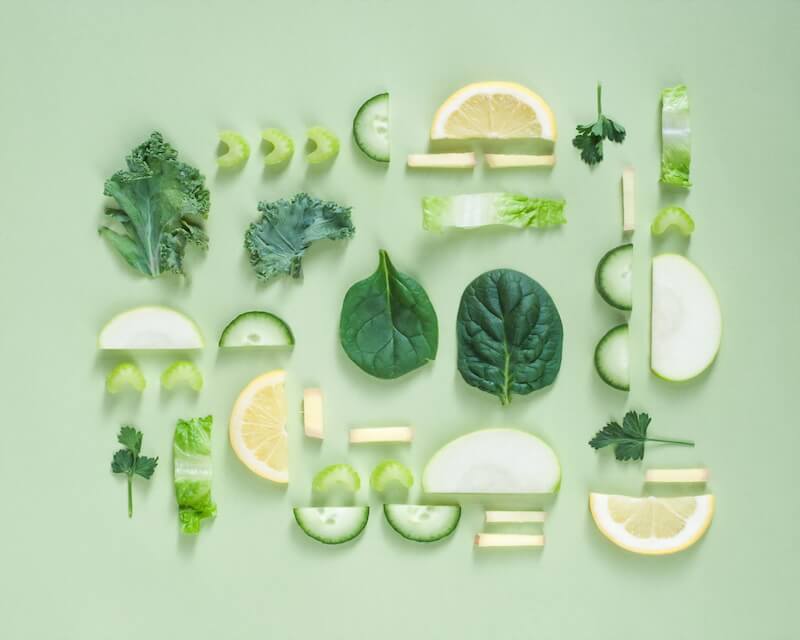
Did you know that up to 40% of cancer cases in the U.S. could be prevented with better nutrition and lifestyle choices?
Research highlights specific foods that can reduce cancer risk by fighting inflammation, protecting DNA, and neutralizing harmful free radicals. Here's a quick rundown of the top cancer-preventing foods:
- Berries: Packed with antioxidants like vitamin C, ellagic acid, and flavonoids to slow tumor growth and protect cells.
- Cruciferous Vegetables: Broccoli, kale, and cabbage contain sulforaphane and indole-3-carbinol, which detoxify carcinogens and kill cancer cells.
- Fatty Fish: Rich in omega-3s (EPA and DHA) to lower inflammation and reduce risks of bowel, liver, and other cancers.
- Nuts: Walnuts, pecans, and almonds offer antioxidants, healthy fats, and minerals like selenium to suppress cancer cell growth.
- Legumes: Beans, lentils, and soy are high in fiber and isoflavones, which protect cells and reduce colorectal cancer risk.
- Green Tea: Loaded with EGCG, a powerful antioxidant that blocks cancer cell growth and supports the immune system.
- Turmeric: Curcumin in turmeric fights inflammation, reduces oxidative stress, and triggers cancer cell death.
Key Tip: Focus on a plant-based diet, limit processed foods, and include these cancer-fighting ingredients in your meals regularly. Even small changes can make a big difference in reducing cancer risk.
Fighting Cancer with Food: Top Foods to Add & Avoid
Berries: Cancer-Fighting Nutritional Powerhouses
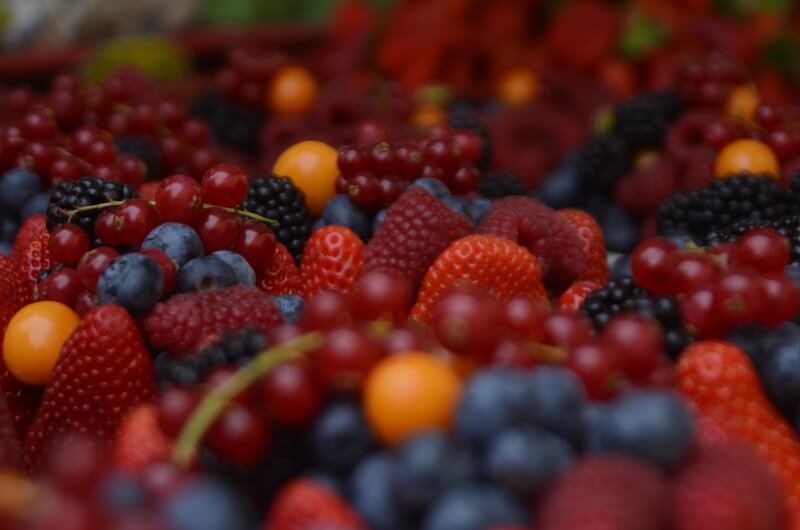
Berries are packed with compounds that help combat cancer. These naturally occurring substances can slow tumor growth, reduce inflammation, neutralize harmful free radicals, and protect DNA from damage.
Here are some key compounds found in berries:
- Anthocyanins: Help slow tumor growth and ease inflammation
- Ellagic Acid: Encourages abnormal cells to self-destruct
- Resveratrol: Blocks cancer cell growth and reduces inflammation
- Flavonoids: Shield DNA from damage
- Vitamin C: Acts as a powerful antioxidant by neutralizing free radicals
Research has shown that berries can block carcinogen activation and lower inflammatory markers like TNF-α, IL-6, and COX-2 [2].
Lindsey Wohlford, a Wellness Dietitian at MD Anderson, emphasizes:
"Berries are a wonderful source of vitamin C."
Just one cup of strawberries provides your entire daily vitamin C requirement [1].
Different types of berries bring specific benefits:
- Blueberries: Contain anthocyanosides and resveratrol
- Strawberries: High in vitamin C and folic acid
- Raspberries: Rich in flavonoids and ellagic acid
- Blackberries: Packed with anthocyanins [1]
One study even found that black raspberries reduced cancer cell growth in 20 patients and positively influenced genetic markers in colorectal tissues [2]. Wild berries often have higher levels of phenolic compounds compared to cultivated ones, but whether fresh, dried, or frozen (especially blueberries), their antioxidant power remains strong [2].
I consume around 70-100 grams of organic mixed wild berries in my morning shake.
Next, let’s dive into how cruciferous vegetables can naturally protect against cancer.
Cruciferous Vegetables: Natural Cancer Protection
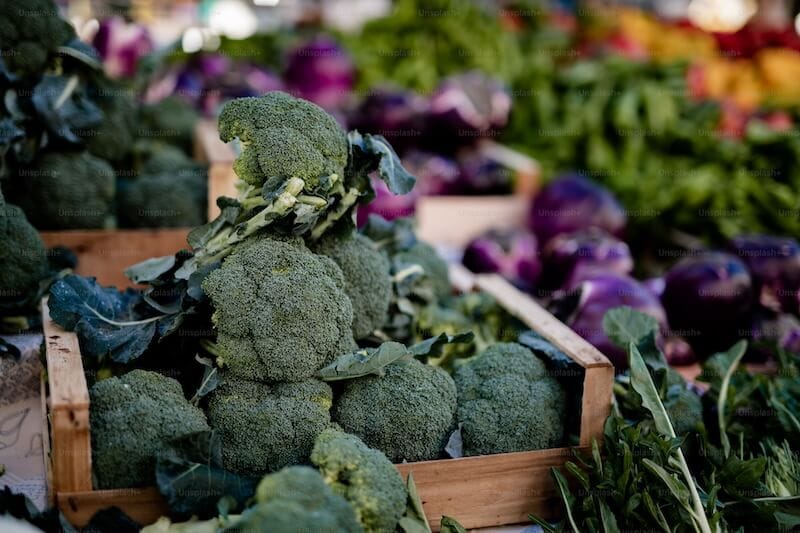
Cruciferous vegetables like broccoli, cauliflower, Brussels sprouts, cabbage, and kale are known for their cancer-preventive properties. This is largely due to compounds such as sulforaphane (SFN) and indole-3-carbinol (I3C).
Studies reveal that sulforaphane works by blocking harmful enzymes that initiate cancer, activating protective enzymes that detoxify carcinogens, and encouraging the death of cancer cells.
Dr. Vijaya Surampudi from UCLA Health highlights:
"With broccoli, specifically, there is a high amount of a phytochemical called sulforaphane, which is a cancer-fighting plant compound that has been linked to reducing the risks of prostate cancer, breast cancer, colon cancer and oral cancers." [3]
Research supports this. A review of 87 case-control studies found that 67% showed an inverse relationship between cruciferous vegetable consumption and cancer risk [4].
Additionally, Dutch research noted that adults eating about 2 oz daily had a much lower risk of colon cancer compared to those consuming just 0.4 oz daily [4].
How to Get the Most Out of Cruciferous Vegetables
Proper preparation can make a big difference in preserving their cancer-fighting benefits:
| Preparation Method | Benefits | Temperature |
|---|---|---|
| Raw | Contains 10x more sulforaphane than when cooked | N/A |
| Steamed | Retains nutrients effectively | Below 284°F |
| Stir-fried | Keeps beneficial compounds intact | Below 284°F |
| Brief microwaving | Preserves folate and vitamin C | Low power |
For best results, cut or chop these vegetables before cooking to activate their compounds. Adding mustard seeds can further boost sulforaphane levels. Steam for just 1–3 minutes and rotate between different types of cruciferous vegetables to get a variety of nutrients.
Dr. Surampudi also stresses the role of diet in cancer prevention:
"Thirty percent relies on genetics. The other 70% is what we do to ourselves. Diet and nutrition is one of those recommendations that should be discussed at every annual physical. Doctors should be checking if their patients are getting the right amount of servings of fruits and vegetables." [3]
Eating cruciferous vegetables at least three times a week has been linked to a lower risk of cancers, particularly lung and colorectal cancers [4].
For example, one cup of raw cauliflower delivers 77% of the daily vitamin C requirement and 20% of vitamin K [5]. These vegetables pack a nutritional punch, making them a key part of cancer prevention.
To maximize sulforaphane and indole-3-carbinol, I do two things:
- I grow my own broccoli sprouts, which contain 10x more sulforaphane than supplements or broccoli.
- I take an indole-3-carbinol supplement daily.
Next, let’s look at how fatty fish and omega-3s contribute to reducing cancer risks.
Fatty Fish: Omega-3s and Cancer Prevention
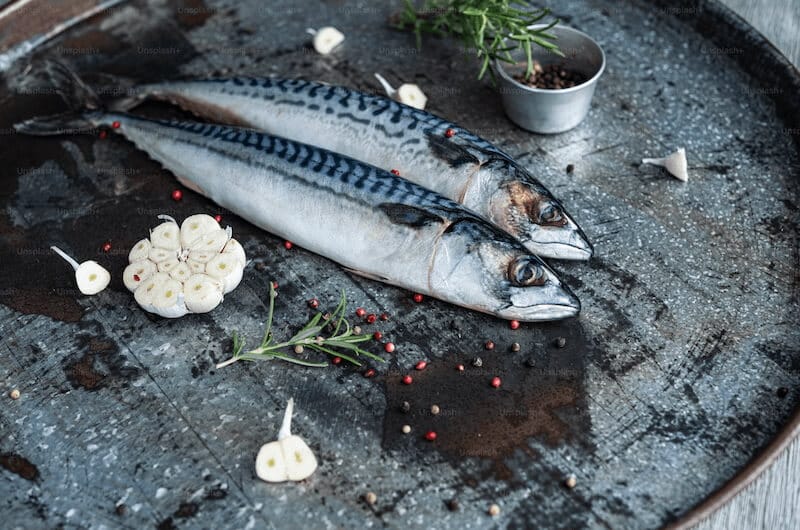
Fatty fish stands out as a powerful ally in cancer prevention, thanks to its omega-3 fatty acids, specifically EPA and DHA. Studies show that omega-3s can help lower cell proliferation, inflammation, and oxidative stress.
One meta-analysis found that eating just 3.5 oz (100g) of fish daily reduces the risk of bowel cancer by 11% [7]. Similarly, increasing fish intake by 0.7 oz (20g) daily was linked to a 6% lower risk of liver cancer [7].
Professor A. M. El-Mowafy highlights DHA's potential:
"DHA elicited prominent chemopreventive effects on its own, and appreciably augmented those of cisplatin as well. Furthermore, this study is the first to reveal that DHA can obliterate lethal cisplatin-induced nephrotoxicity and renal tissue injury." [6]
Top Sources of Omega-3s
Here's how much omega-3 (EPA + DHA) you get from some popular fatty fish:
| Fish Type | Omega-3s (EPA + DHA) per 3.5 oz serving |
|---|---|
| Mackerel | 4,580 mg |
| Salmon | 2,150 mg |
| Herring | 2,150 mg |
| Anchovies | 2,053 mg |
| Sardines | 982 mg |
How Much Should You Eat?
Aim to eat fatty fish at least twice a week [7]. A single serving is about 3 oz (roughly ¾ cup) of cooked fish.
Avoid large fish like salmon due to metal contamination.
For the best cancer-preventing effects, focus on fish like mackerel, salmon, herring, and sardines.
These varieties pack more omega-3s compared to leaner fish. Combined with other nutrients in fatty fish, omega-3s provide a strong defense against several types of cancer.
This helps you meet the recommended 250-500 mg of EPA and DHA daily for optimal health [8].
I aim for 1-2 grams of EPA and DHA daily from high-quality filtered fish oil sourced from small fish.
Including these fish in a well-rounded, healthy diet can make a big difference.
Up next, learn how other nutrient-rich foods can further support cancer prevention.
Nuts: Cancer-Fighting Properties
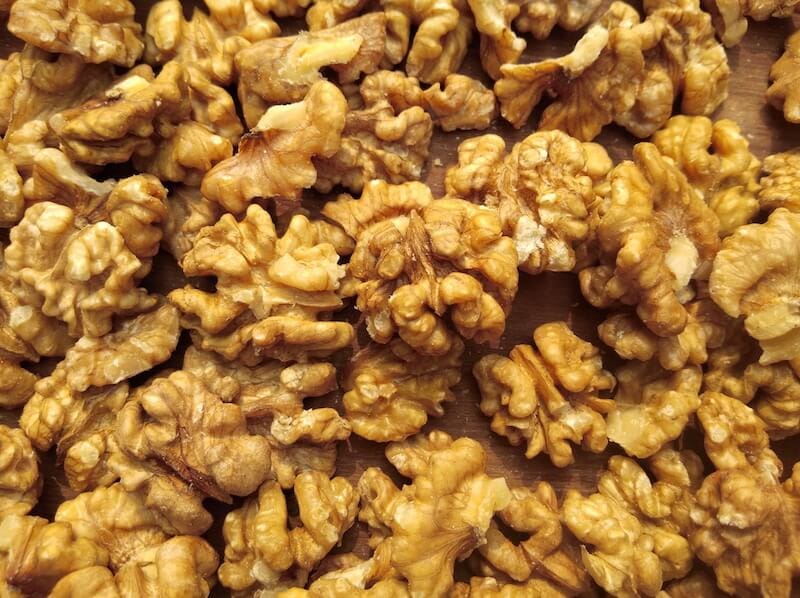
Nuts are another excellent addition to a diet focused on reducing cancer risk, thanks to their rich mix of nutrients and bioactive compounds.
Research shows that eating just 1 oz (28 g) of nuts daily can lower the risk of cancer-related death by 11% [9].
This effect is especially strong for digestive system cancers, with a 17% risk reduction [11].
Nuts contain several components that may help fight cancer, including:
- Antioxidants: Found in high amounts in walnuts and pecans
- Unsaturated fats: Help reduce inflammation
- Phytochemicals: Such as ellagic acid and melatonin
- Essential minerals: Like selenium, magnesium, and calcium
- Vitamins: Including vitamin E, folate, and niacin
Dr. Hardman’s research emphasizes walnuts' unique potential:
"Components of walnuts are indeed absorbed, circulate in the blood, and can affect breast cancer cell proliferation." [10]
Examples of Cancer-Fighting Nuts
| Nut Type | Benefits |
|---|---|
| Walnuts | High in antioxidants; may suppress cell proliferation |
| Pecans | Strong antioxidant properties |
| Almonds | Offer moderate protection |
| Brazil nuts | Rich in selenium; may influence gene expression |
| Macadamia nuts | Support cholestorol balance, protect cells from oxidative stress |
Studies back these benefits. Among 3,449 breast cancer survivors, those eating about 0.6 oz (17 g) of nuts weekly had a 52% improvement in disease-free survival compared to those who didn’t eat nuts [9].
Similarly, stage III colon cancer patients who consumed at least two servings of nuts per week saw a 57% boost in overall survival [9].
For the best results, aim for 1 oz (28 g) of mixed nuts daily, focusing on walnuts, pecans, almonds and macadamia.
Add them to oatmeal, salads, or snacks to easily include them in your diet. Nuts also promote gut health by increasing microbial diversity, which further supports cancer prevention [9].
I add 2 walnuts and 10-15 macadamia nuts to my mid-day protein shake.
Legumes: Plant Proteins That Fight Cancer
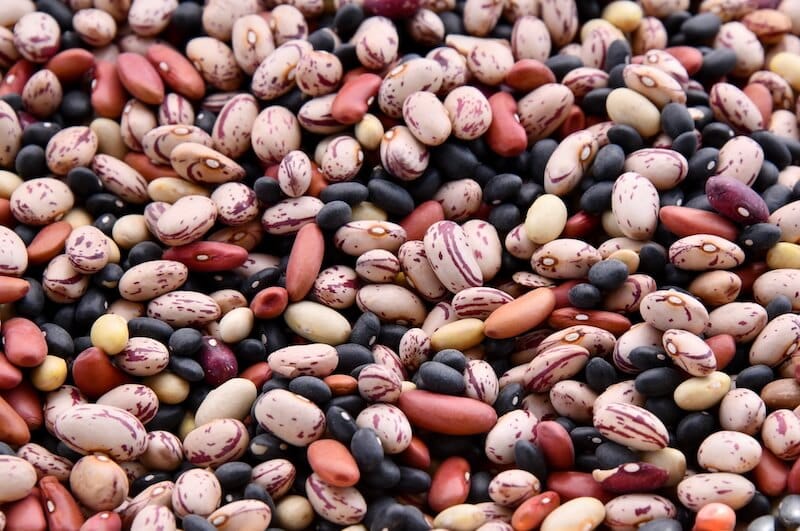
Legumes have been linked to a reduced risk of colorectal cancer. Research shows they can lower the risk by 9% overall, with an 18% reduction observed in Asian populations [14].
Their cancer-fighting power comes from several bioactive compounds:
| Compound Type | Role in Cancer Prevention |
|---|---|
| Dietary Fiber | Encourages production of butyrate, which protects cells |
| Isoflavones | Slows down tumor cell growth |
| Bowman-Birk Inhibitors | Offers anti-inflammatory and chemopreventive effects |
| Phenolic Compounds | Reduces inflammation and limits cell proliferation |
| Short-Chain Fatty Acids | Triggers apoptosis (cell death) in cancer cells |
Soybeans, in particular, stand out for their protective benefits. They are rich in isoflavones, which interact with cancer cells through both estrogenic and antiestrogenic mechanisms, reducing the risk of colorectal cancer by 15% [13][14].
How to Get the Most Out of Legumes
- Prepare them right: Soak dried beans and discard the water to minimize gas-producing compounds [12].
- Diversify your choices: Add lentils, chickpeas, soybeans, and other legumes to your meals to take advantage of their unique compounds [13].
- Set a weekly goal: Aim for at least two servings of 3.5 oz (100 g) per week [15].
Laboratory studies back up these findings. For example, adzuki beans have shown strong anti-proliferative effects on various cancer cell lines. Similarly, black and navy beans have been linked to fewer cases of colon adenocarcinoma in animal studies [16].
Additionally, the fiber in legumes feeds gut bacteria that produce butyrate - a short-chain fatty acid known to inhibit tumor growth and support healthy cell differentiation [12][13].
I regularly make hummus with chickpeas and enjoy Turkish lentil soup almost every week.
Up next: Discover how green tea can complement legumes in fighting cancer.
Green Tea: Antioxidants That May Help Block Cancer
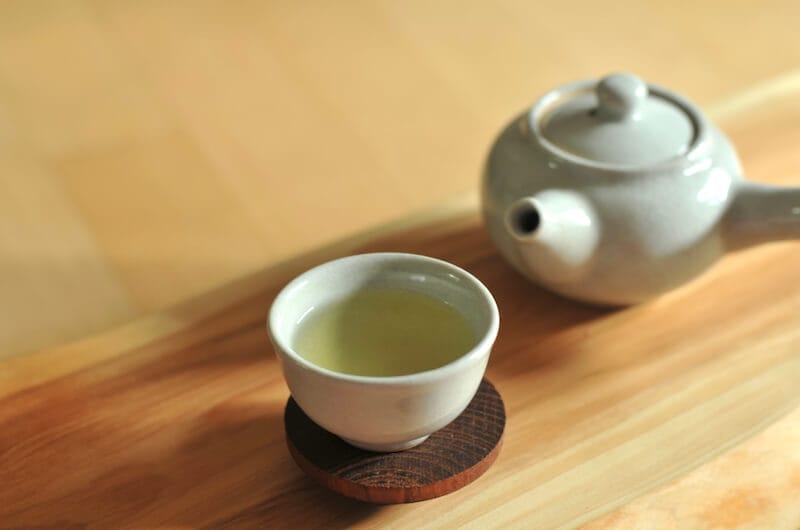
Green tea is packed with polyphenols, especially catechins, which are known for their potential cancer-fighting properties.
Among these, (-)-Epigallocatechin-3-gallate (EGCG) stands out, making up about 70% of the catechins in green tea [18].
How EGCG Works Against Cancer
EGCG helps combat cancer through several mechanisms:
| Mechanism | How It Works |
|---|---|
| Antioxidant Activity | Neutralizes harmful free radicals [17] |
| Cell Cycle Control | Stops cancer cell growth and promotes their death [17] |
| Enzyme Inhibition | Prevents activation of carcinogens by blocking cytochrome P450 enzymes [17] |
| Immune System Support | Boosts the body's natural defenses against cancer cells [18] |
| Epigenetic Regulation | Alters gene expression to hinder tumor growth [18] |
"EGCG is a multipotent anticancer agent, which not only provides solid evidence to support the anticancer potential of green tea, but also offers new clues for discovering multiple-targeted anticancer drugs." - Lei Chen, Researcher [17]
Matcha vs. Regular Green Tea
Matcha green tea is often considered more powerful than regular green tea. Here's why:
- Chlorophyll: Matcha contains 5.65 mg/g compared to 4.33 mg/g in regular green tea [22].
- Caffeine: Matcha offers 18.9-44.4 mg/g, while regular green tea ranges from 11.3-24.67 mg/g [22].
- Rutin Content: Matcha has a high rutin level of 1,968.8 mg/L [22].
Best Practices for Cancer Prevention
Studies suggest that drinking 10 cups of green tea daily (about 2.5g of green tea extract) can have a noticeable impact on cancer prevention [19][20]. One study revealed that this level of consumption delayed cancer onset by 7 years in women [19].
For the best results:
- Drink green tea throughout the day rather than all at once.
- Opt for high-quality green tea, with matcha being a top choice.
- Always brew it fresh to preserve its antioxidant properties.
Research also indicates that matcha green tea can specifically target cancer stem cells by disrupting their metabolism and signaling pathways [21].
My research shows that Benifuuki Ichibancha has the highest EGCG + ECG content. I source mine from award-winning Japanese tea farmer Ota Shigeki and add it to my daily shake.
Up next, learn how turmeric's compounds can complement these effects.
Turmeric: Anti-Cancer Spice
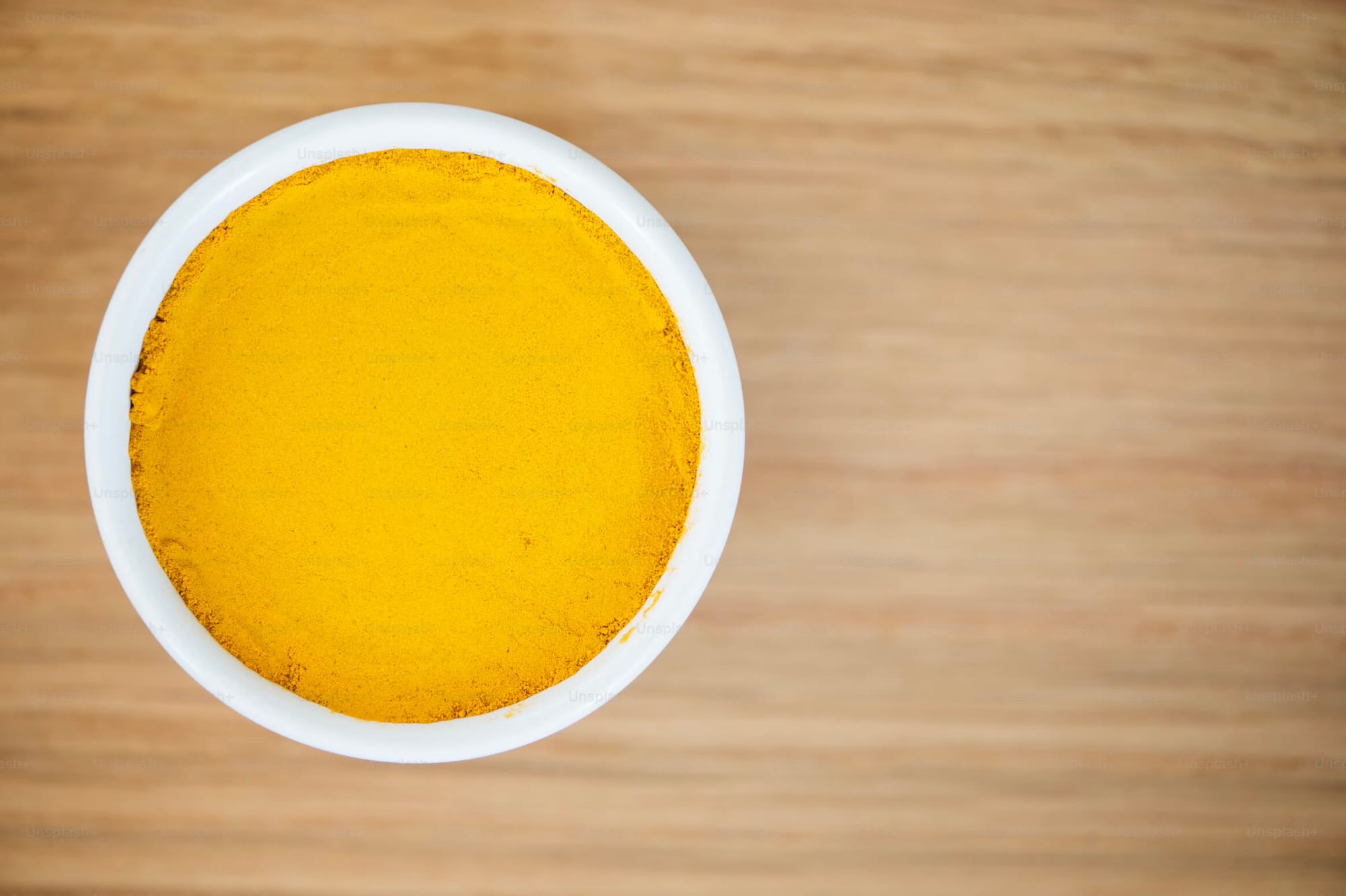
Turmeric stands out among cancer-fighting foods thanks to curcumin, its primary bioactive compound.
Curcumin interacts with the body's cells in various ways to help prevent and combat cancer.
In fact, research indicates that 37% of turmeric-related studies focus specifically on cancer treatment [25].
How Curcumin Works
| Cellular Target | Action Against Cancer |
|---|---|
| Cell Signaling | Disrupts pathways involved in cell cycle regulation and inflammation [23] |
| Immune System | Adjusts cytokine levels and limits inflammatory responses [24] |
| Growth Factors | Lowers proteins that encourage tumor growth [24] |
| Oxidative Stress | Reduces harmful reactive oxygen species (ROS) [24] |
| Cell Death | Encourages apoptosis (programmed cell death) in cancer cells [24] |
Types of Cancer with Promising Results
Research highlights turmeric's potential against several cancers, with notable findings in:
- Prostate Cancer: A study in Prostate Cancer and Prostatic Diseases found that curcumin induces cell death in both hormone-sensitive and hormone-resistant prostate cancer cells [26].
- Pancreatic Cancer: A 2016 study published in Pancreas demonstrated that curcumin can trigger pancreatic cancer cell death by targeting specific cellular mechanisms [27].
How to Use Turmeric Daily
Looking to add turmeric to your routine? Here are 3 simple and effective ways:
- Golden Milk: Warm 1 cup of milk with ½ teaspoon turmeric powder, a pinch of black pepper, and 1–2 teaspoons of natural sweetener. Heat until it comes to a gentle boil [28].
- Anti-Cancer Curry: Cook 1 inch of fresh ginger, 1 teaspoon turmeric, 14 ounces of coconut milk, mixed vegetables (like butternut squash and green beans), and fresh herbs such as cilantro and mint. Simmer until flavors meld together [30].
- Turmeric Extract Supplement: Has the highest amount of high bioavailable curcuma.
A Word of Caution
"Just because a product is labeled as 'natural' does not always mean it's safe - especially for people with cancer." [29]
I consume a supplement called CurcuRouge® daily.
Next, explore practical ways to include these cancer-fighting foods in your everyday meals.
How to Use These Foods Daily
Now that we've covered the cancer-fighting benefits of certain foods, let's look at how to include them in your daily routine. Research indicates that a diet centered around plant-based, whole foods can significantly lower cancer risk [31].
Here’s a straightforward guide to help you create balanced meals throughout the day:
Daily Serving Suggestions
| Food Category | Daily Target | Easy Ways to Include Them |
|---|---|---|
| Berries | 2 to 3.5 ounces | Add to breakfast cereals, shakes or joghurt |
| Cruciferous Vegetables | > 2 oz daily | As a snack or in salad |
| Omega 3 | 1-2 gram of DHA/EPA | Add fish or fish oil to a fatty meal |
| Nuts | 1-2 oz mixed nuts daily | As a snack, with a shake or with oats |
| Legumes | About 1/4 cup daily | Use in soups, salads, or main dishes |
| Green Tea | 1-2 teas daily | Great to replace coffee in the morning |
| Turmeric | Spice or Supplement | Great for dishes or drinks |
Tips for Cooking and Preparation
"Studies have shown that preserving the cancer‐fighting properties of foods extends beyond food processing and into your kitchen" [32].
To make the most of these foods, try these simple techniques:
- Steam cruciferous vegetables for less than 5 minutes to retain nutrients.
- Pair turmeric with black pepper and oil to increase absorption.
- Store ingredients properly to maintain their nutritional value.
Meal Planning Made Simple
Here’s an easy way to structure your meals:
Breakfast:
- Add berries to cereal, yogurt, or smoothies.
- Swap coffee for green tea for added antioxidants.
Lunch and Dinner:
- Fill half your plate with vegetables.
- Add legumes to soups or salads.
- Include fatty fish twice a week.
- Season dishes with turmeric for an extra boost.
Snacks:
- Keep fresh fruit handy for a quick bite.
- Enjoy a small portion of nuts for a healthy snack.
Storage Tips for Maximum Freshness
- Keep berries unwashed in the refrigerator to prevent spoilage.
- Store nuts in airtight containers.
- Protect green tea by keeping it in a cool, dark place.
- Keep turmeric powder in an airtight container away from light.
Subscribe now and own your longevity
Receive weekly science-backed strategies for longevity, disease prevention, and optimal health.